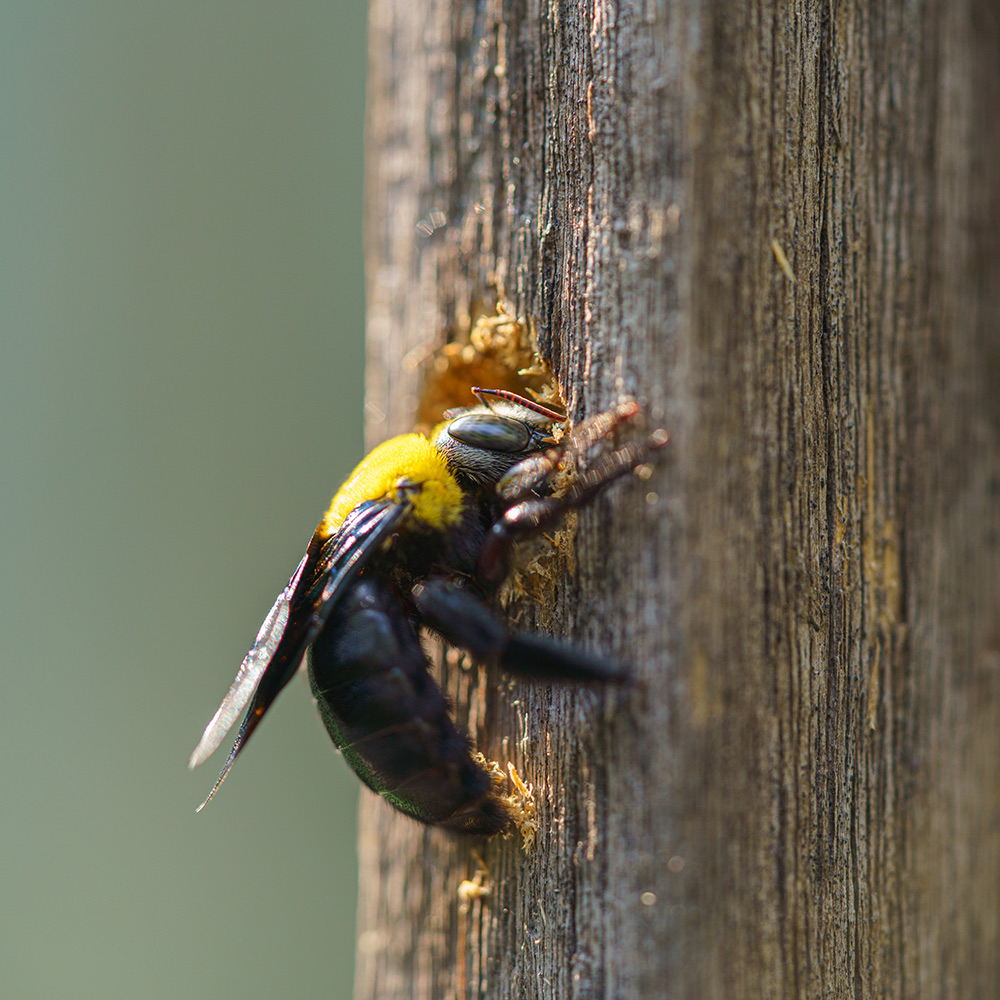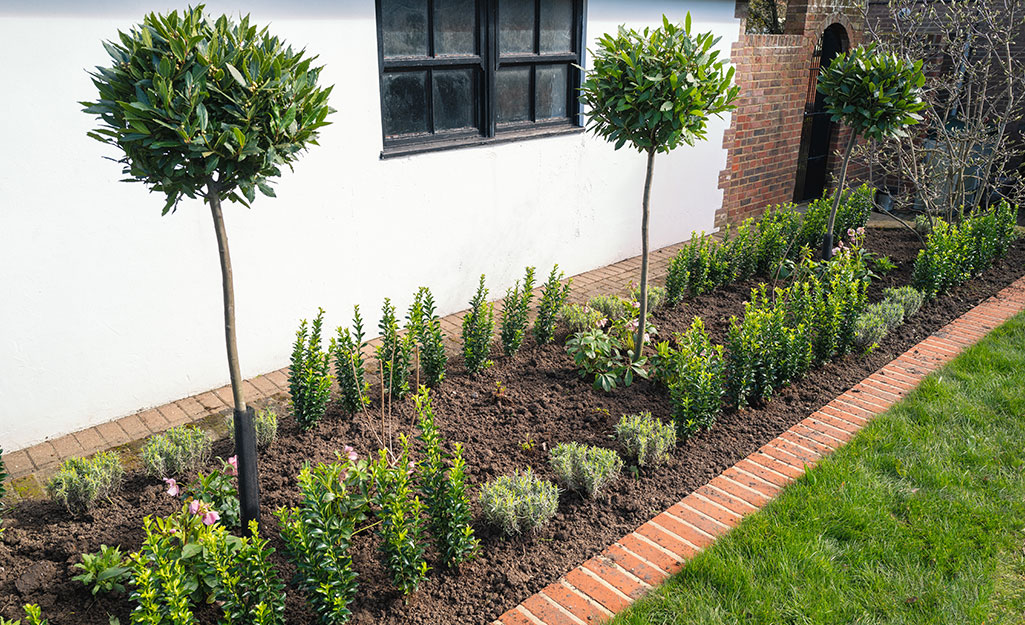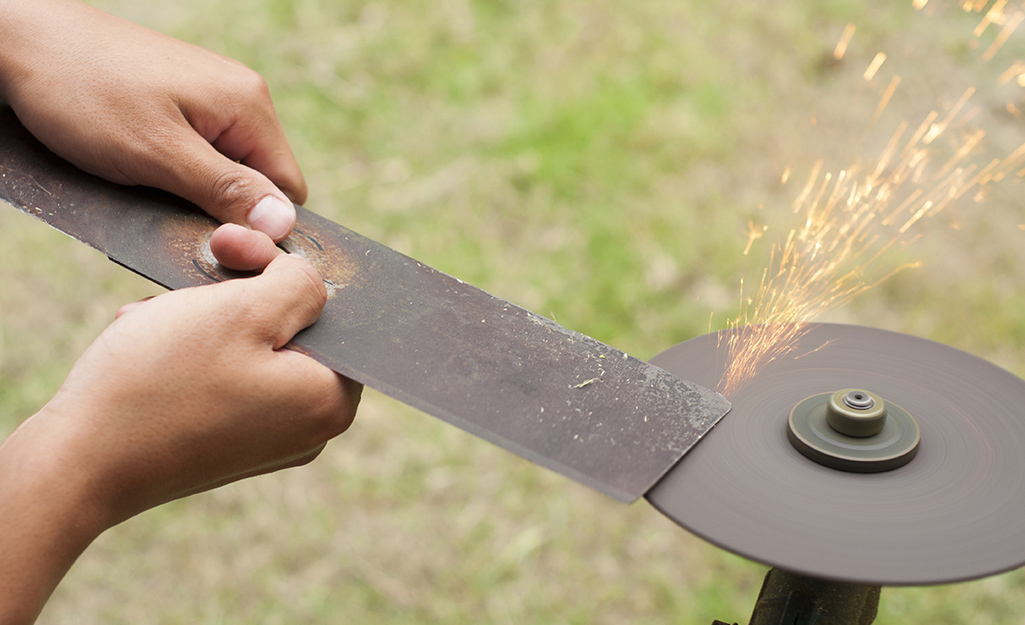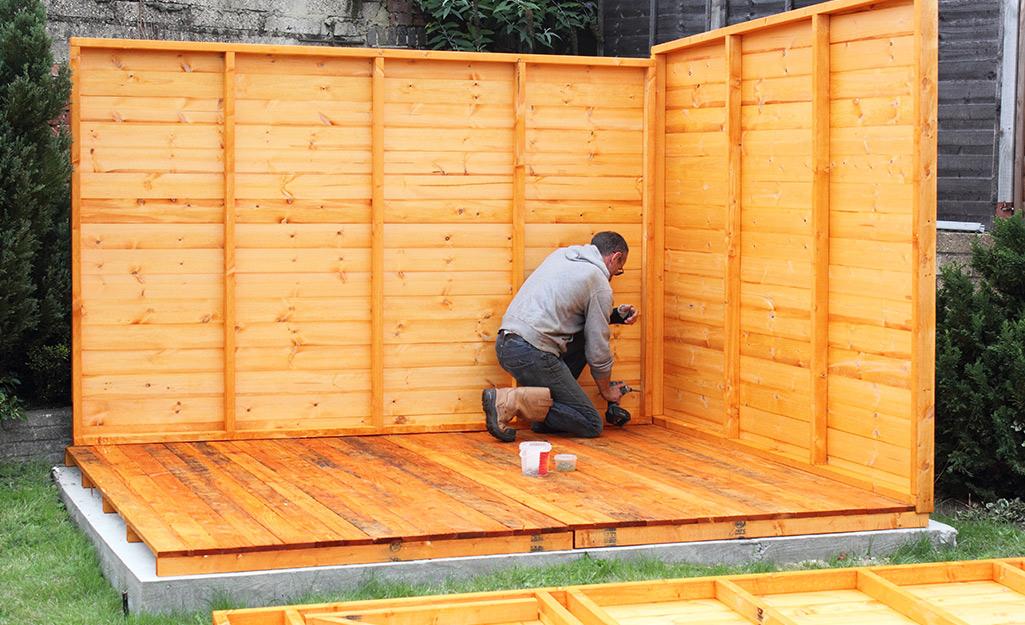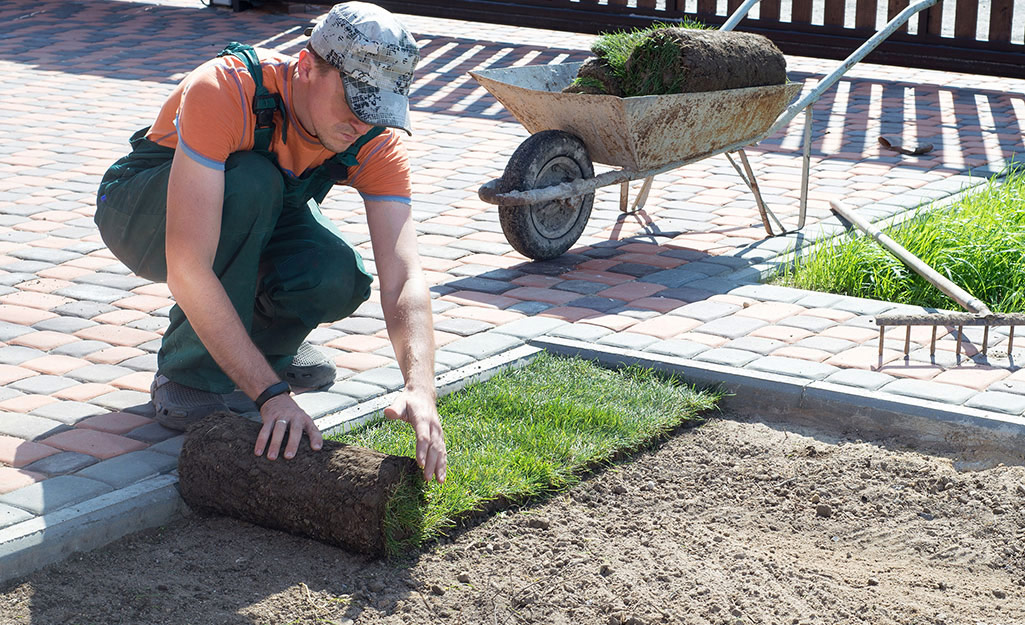
Do you have what you need to make your garden grow?


Garden Center
Shop Outdoor and Garden Supplies Near You
Shop Plants Online
Shop Outdoor and Garden Brands
Frequently Asked Questions About Gardening
What can I do about weeds in my lawn?
Weeds might start peeking through in the garden beds, even if you put down mulch to keep them at bay. Pull out weeds from the root in edible flower or vegetable gardens, and dig up the roots if the weed snapped off without them. Be sure to get rid of weeds before the weeds' flowers dry out and and drop their seeds. If you'd like to treat weeds with weed killer, check that it's safe for pets and pollinators — and wear a respirator and heavy-duty rubber gloves to ensure that it doesn't touch your skin or your lungs.
Is my lawn dead?
It could be, but it's also likely napping during those soaring temps. Cool-season grass goes dormant in the summer. It turns crispy brown but isn't usually dead. You can check though: If you tug on a grass blade and it pulls right out, it's time to plant new sod or grass seed because the grass is a goner. Water dormant lawns deeply and infrequently. Warm-season grass needs water every few days in the summer. It should stay green if it's healthy.
When's the best time to water grass?
If you can water during the early morning or in the evening, that's ideal. A noon or mid-day watering will evaporate quickly, so come back with an evening watering. This applies to whatever you're growing: plants, bushes, veggies, and grass. Whenever you water, give all the plants a thorough drink, and don't skip it because it's not the best time. The plants still need hydration regardless of the time on the clock. Depending on your grass type, lawn's health, and climate, you may also want to look into applying a liquid lawn fertilizer.
How do I fertilize my veggie garden?
After you've planted your plants or flowers, you'll need to make sure they're hydrated and well-fed. Choose a synthetic or an organic fertilizer that fits your needs and give your garden a boost. You can even find one that's formulated for the plants you're growing, whether you need a flower fertilizer, veggie fertilizer, fruit tree fertilizer, or a general garden fertilizer blend. Only apply as often as directed on the packaging. More is not better here. Be sure to water immediately after, as directed, so the plants won't be burned by the fertilizer.
How can I cool off my patio?
When you need a break from working in the yard, shelter beneath a patio umbrella or covered gazebo. If you have sturdy structures like a house or shed, make your own shade by attaching shade sails and awnings. However, sometimes shade isn't enough because it's extremely humid out. That's when a patio mister or misting fan can help cool the air and turn a stifling afternoon into a refreshingly relaxing day. Go back to enjoying the sun when that water-cooled air is ready.
How can I create an outdoor oasis for entertaining?
Spending time with friends in gorgeous summertime weather makes the season even more special. But you don't need a full patio makeover or to create your own patio conversation sets from scratch to do it. Even a minor backyard refresh can make a big difference. New outdoor lounge furniture, outdoor rugs, or even outdoor string lights can add character to a patio.
Garden Project Ideas
The Home Depot Garden Center at Cypress Park
The Home Depot 4th of July Sale
Welcome the 4th of July with a yard that's dressed to impress. Our huge 4th of July Sale can help you get it done. Let your great outdoors help you enjoy the festivities with your friends and family. Put out new patio furniture to give everyone room to relax. That gas grill you've had your eye on can help you keep everyone fed and happy. Save money now and use these staples of outdoor life for years of cookouts to come.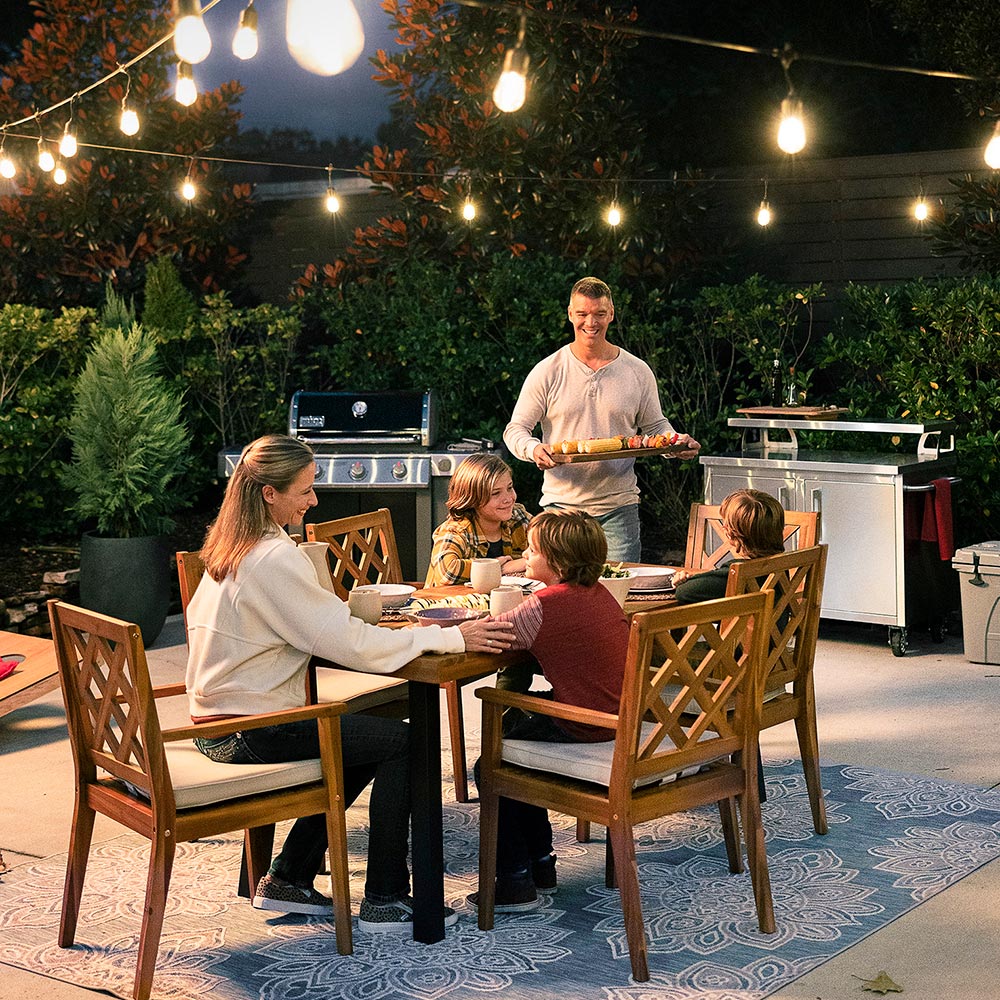
As the calendar turns to summer, your landscaping and garden will weather more intense heat and UV rays than earlier in the season. You'll want to consider how to keep things cool with shade and irrigation. Just like we can get sunburned, grass and perennials can get scorched, and trees can lose their leaves prematurely. We've got advice to help your garden, your lawn, and your family make it through the hotter months.
Lawn Repair and Patching
Burnt, or scorched, grass has an oddly shaped discolored spot that looks yellow. It happens when plastic or metal sits on the grass and bakes in the sunlight or a reflective surface shines continuously on your lawn. You'll discover it when you disturb something that's been sitting out in the yard, like a trash can. Car windows or mirrors can also scorch grass when the sun angle is right.
Water burnt grass well and wait a week. You should see the signs of life returning by then. If it's damaged beyond repair by pet behavior or extreme wear, you'll need to use patch and repair seed to fix it up or replace the grass.
Whether you're doing upkeep on your current lawn or patching the bare spots, keep in mind which type of grass it is. Match the kind of grass to how much sun your lawn gets — or to the existing grass type if you're doing patch repair. In other words, if your lawn is shaded by buildings and gets partial shade or dappled sun, make sure you plant grass that's not meant for full sun.
Watch Your Garden Thrive
Summertime garden upkeep comes down to balancing sunshine and water, as outlined in these garden watering tips. You'll need both to keep your spirits high and greenery growing with summer flowering. A general rule when watering plants and flowers is to aim the water at the roots. A garden hose, drip irrigation system, or sprinkler can get the job done. The blooms themselves don't need to be watered or even misted. Many flowers wilt and droop when but recover when they dry. Succulents are the exception to basic watering rules, so look up your specific types of succulents to optimize their care.
In addition to watering them regularly, monitor your plants' nutrient intake. Add fertilizer as recommended. We've even got fertilizers to match the plants you're growing so they'll get the proper nutrients.
Vertical Edible Gardening
Grow produce vertically to conserve space. Many vegetable plants are vines and well-suited to climb a trellis or fence, so plant them next to one. Support the stem itself, as well as the junctions right below where the branches grow off the stem. This is so the weight of the plant doesn't snap the branches or stem.
Fasten your plant to a tomato cage or pole with string, plant ties and wires, garden wire, or fabric strips. Be sure to tie each plant loosely. Then the leaves and branches can sway in the breeze and the stem has room to grow wider. Strawberries, tomatoes, squash, pumpkins and cucumbers need support as they bear fruit. Melons and squash require hammocks made of string, old nylons, a sling, or other stretchy fabric to support the heavy produce. These plants take up less space on the ground when grown vertically, which allows you to fit even more plants or have walking room in between.
Vines as Decorative Shade
Set up vines to climb an arched arbor or trellis to provide both beauty and shade. Go with native vines to attract bees, butterflies, and hummingbirds. Grape vines are a classic choice, but they take time to mature, so you'll only be enjoying shade and not fruit for a few years. Remember to match your vine plants to how much sunshine you receive, as some like full sun and others don't. As a bonus, many vines put out sweet-smelling flowers, so you can enjoy a delightful fragrance as you cool off in the shade.
Find Your Summertime Lawn Care Supplies Today
No matter if your perfect summer includes relaxing, grilling, gardening, or finishing your outdoor DIY projects, we've got you covered. Make the most of these lengthy evenings and early mornings to enjoy all the season has to offer. Shop online at your leisure, on our app anywhere you like, or in the aisles of your Cypress Park store.
Nearby Stores
Find Another Store
1675 Wilshire Blvd
Los Angeles, CA 90017
3.17 mi
Store:
Pro Service Desk:
Mon-Sat: 6:00am - 10:00pm
Sun: 7:00am - 8:00pm
5040 San Fernando Rd
Glendale, CA 91204
4.85 mi
Store:
Pro Service Desk:
Mon-Sat: 6:00am - 10:00pm
Sun: 7:00am - 8:00pm
500 S Marengo Ave
Alhambra, CA 91803
4.88 mi
Store:
Pro Service Desk:
Mon-Sat: 6:00am - 10:00pm
Sun: 7:00am - 9:00pm
;Resize=(920,575))

)

.jpeg?im=Crop,rect=(363.69230769230774,1.2307692307692308,958.7692307692308,958.7692307692308))
)
)
)
)









)
)




)


)
)















